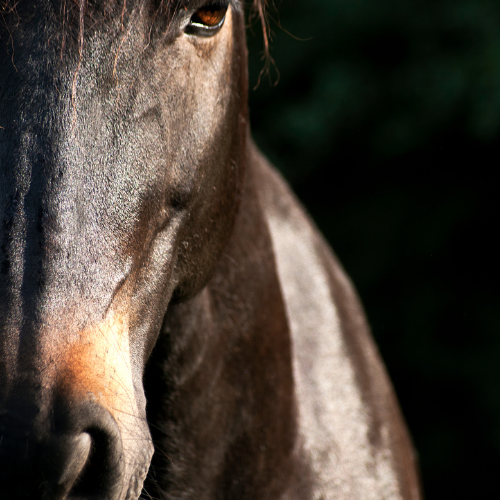Galaxy is now 24 and so I need to approach his work differently.
The first step in bringing any older horse back into work is a thorough health check by a vet. This involves assessing the horse’s soundness, especially in the back, legs, and mouth, while looking for signs of arthritis or skeletal misalignment. A vet check ensures you can identify potential issues early on and avoid worsening existing conditions.
Turnout and Environment
Turnout is crucial in maintaining both the physical and mental health of older horses. Spending time in paddocks keeps them active, but it’s important to ensure these areas are safe, free from steep slopes or ice and too much mud.
Nighttime turnout can be an option during warmer months to avoid daytime flies.
When stabling is necessary, ensure regular breaks and opportunities for hand grazing, which significantly aids in reducing stress and promoting well-being.
Training and Activities
Training should be tailored to the older horse’s individual capabilities. Engage in activities like long hacks or hill work, but take care not to overburden them, especially in terms of joint strain. Flatwork, including connected transitions and lateral exercises, can enhance strength without the intense pressure of competitive performance levels. Prioritise maintaining fitness, happiness, and comfort above pushing for high-intensity performance levels.
While lunging is useful for getting horses back into work, it must be limited due to potential joint strain. Instead, focus on groundwork and basic riding to help the horse rebuild condition while strengthening the horse-rider bond. Groundwork, such as bonding exercises, benefits the horse by reducing anxiety and improving communication.
Social Interaction and Mental Stimulation
For older horses, social interaction is just as crucial as physical activity. Incorporate fun activities like short hacks or training for simple groundwork tricks.
Regular grooming and affectionate interaction maintain their emotional health, which can be highly beneficial as many older horses have come to expect high levels of attention.
Re evaluate
Track your horse’s progress carefully, noting changes in condition, energy, and recovery times. If signs of fatigue or stiffness appear, adjust the training to prolong the walking phase or lighten exercise intensity. Each horse is unique, necessitating a personalised approach. Always prioritise well-being and adjust when the situation calls for it

